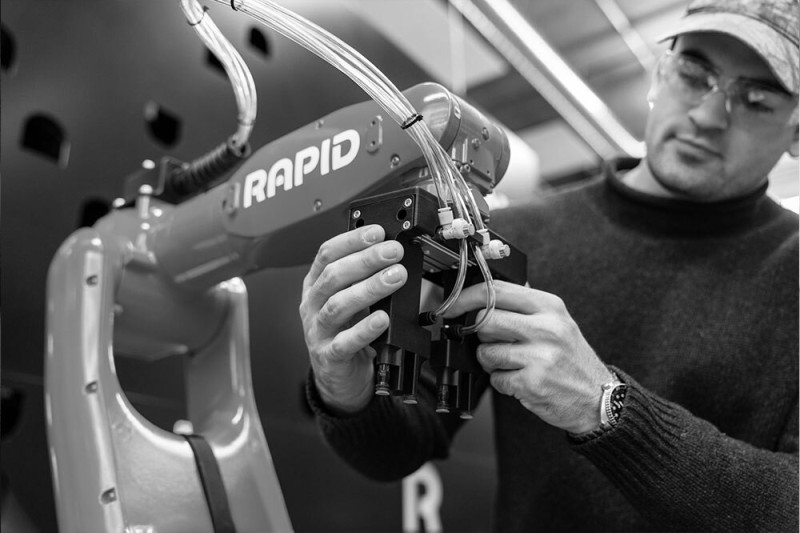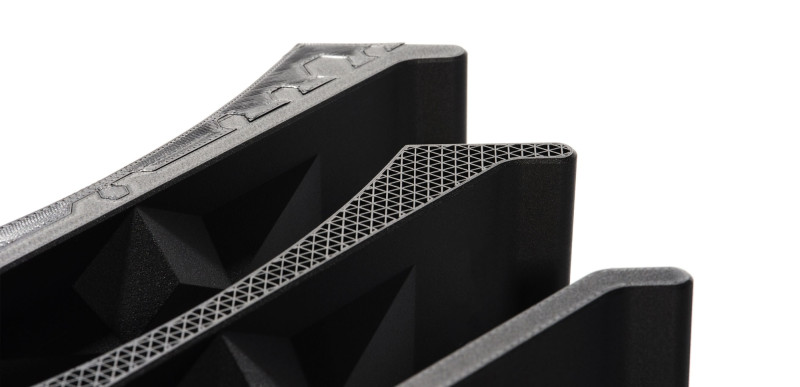
The Critical Role of 3D Printing in the Food and Beverage Industry
Food and beverage manufacturing is a quickly growing industry; the processing equipment market alone is projected to reach $84.9 billion by 2028. Several challenges persist in the sector. Manufacturers run into rising cost pressures, labor shortages, and supply chain disruptions. With a Markforged printer on the factory floor– thousands of manufacturers in food and beverage as well as other industries have reduced the cost of custom tooling and MRO parts up to 90%, supported aging equipment, minimized spare part inventory, and ensured operator safety. Fortunately, 3D printing has evolved beyond its prototyping origins into a powerful tool for tackling challenges on the factory floor. Let’s delve into the practical solutions offered by 3D printing for the food and beverage industry.
How Additive Manufacturing Benefits Food & Beverage Production
1. Keep Lines Up and Running by Reducing Lead Times for Replacement Parts
Wear and tear on manufacturing equipment leads to maintenance and downtime, impacting production efficiency. 3D printing is a cost-effective alternative for producing replacement components like brackets, pushers, and EOAT on-demand.

Consider pushers on the packaging lines, which are used for diverting, sorting, rejecting, inserting, feeding, and lane switching. Replacement pushers can be 3D printed in-house in a matter of hours, resulting in significantly faster lead times and lower part cost compared to outsourced production. This eliminates the need to wait for shipping and part development cycles and allows the manufacturing line to get back up and running to avoid costly downtime.

2. Support Aging Equipment for Food and Beverage Manufacturing
The machines responsible for the continuous operation of the factory floor range from brand new to decades old. As machine manufacturers update product lines and cease support of older models, sourcing legacy parts for older equipment becomes a challenge, especially if the machine manufacturer no longer exists.
With additive manufacturing, food and beverage manufacturers can produce the legacy components in-house with a 3D printer, reducing the time, cost and complexity associated with sourcing them externally. This capability not only supports continuous operation but also extends the life of valuable capital equipment.
3. Boost Sustainability and Cut Supply Chain Costs
Disruptions in the global supply chain have led to delays, shortages, and increased costs in sourcing parts– impacting manufacturers’ ability to meet demand and revenue goals.
For example, a small component like a conveyor guide, which uses compressed air to transport products along the line, currently takes up to 12 weeks to source and produce. However, manufacturers print parts within hours or days, restoring the factory line to its original productivity.
Food additive manufacturing reduces the environmental impacts of complex supply chains by decentralizing the sourcing process. In the case of an assembly line that needs to be retooled to accommodate new products, manufacturers simply print a component at the factory. Introducing a digital 3D printing platform onto the factory floor reduces manufacturers' dependence on distant suppliers, decreases excess spending on materials, transportation, and resources – all contributing to a more efficient and sustainable manufacturing process.
4. Keep Operators Safe
Ensuring safety on the production line is critical for both operator wellbeing and operational efficiency. Food and beverage manufacturers face the possibility of substantial fines from regulatory safety agencies for violations, highlighting the importance of accident prevention and implementing safeguards to reduce injury risks associated with moving parts. 3D printing can be used to create safeguards, ergonomic aids, and tools. Despite their simplicity, these parts prove both cost-effective and instrumental in upholding operator safety on the production line.

Engineering and design teams can utilize in-house 3D printers to develop a custom-designed safeguard addressing a pinch hazard identified on the packaging line. 3D printing offers greater design flexibility compared to traditional manufacturing methods, allowing the safeguard to seamlessly attach the safeguard via existing mounting points on the bundler machine. The design requirements for the part are confirmed using Simulation, the Markforged software tool for validating part strength before printing.
3D printing solves common problems faced in the food and beverage industry. In-house 3D printing technology enables manufacturers to reduce the cost of custom tooling and MRO parts, achieve significant time savings, innovate efficient designs, and increase the lifespan of aging equipment. Additive manufacturing alleviates the challenges manufacturers encounter as they expand automation on the production line.
All of the blogs and the information contained within those blogs are copyright by Markforged, Inc. and may not be copied, modified, or adopted in any way without our written permission. Our blogs may contain our service marks or trademarks, as well as of those our affiliates. Your use of our blogs does not constitute any right or license for you to use our service marks or trademarks without our prior permission. Markforged Information provided in our blogs should not be considered professional advice. We are under no obligation to update or revise blogs based on new information, subsequent events, or otherwise.
Never miss an article
Subscribe to get new Markforged content in your inbox
